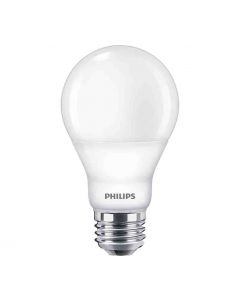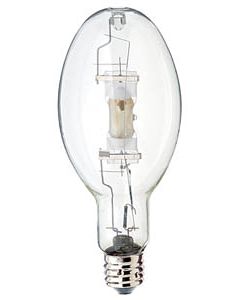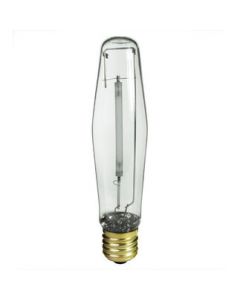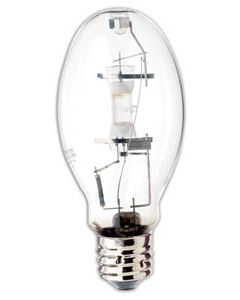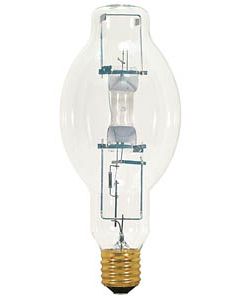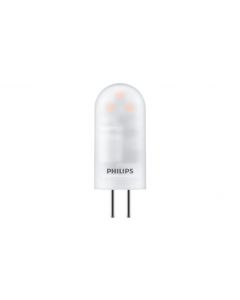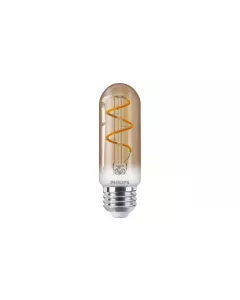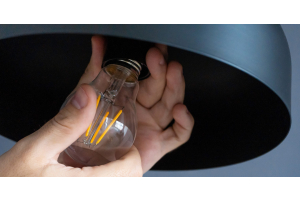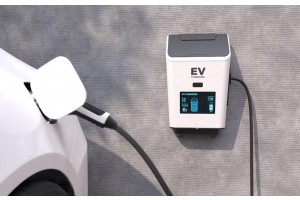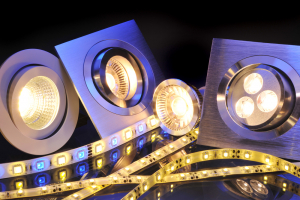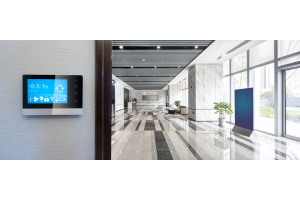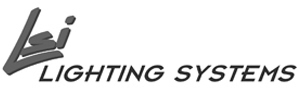Bulb Shapes
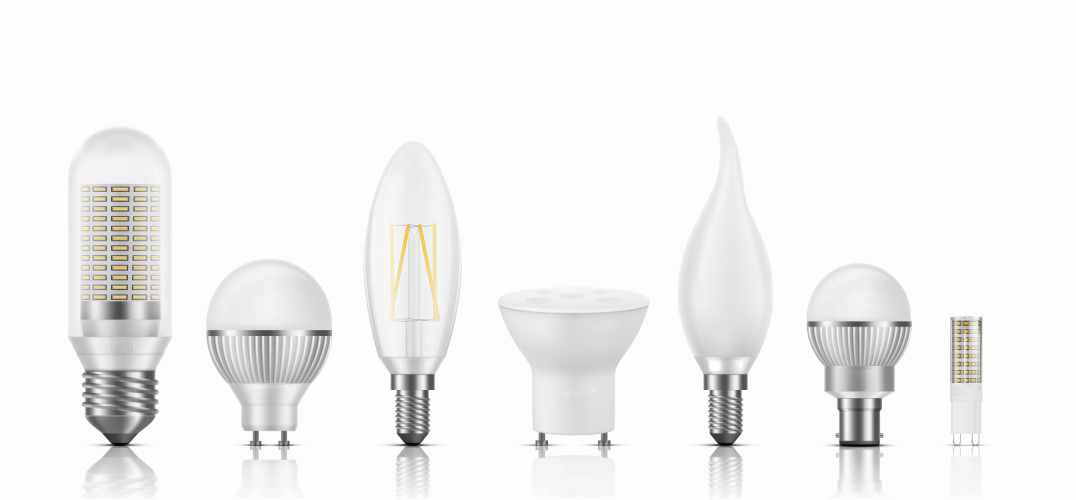
Bulb Shapes: Everything You Need to Know
There are many types and varieties of light bulbs, each with its own specific usage. Even just for household lighting, the wide range of bulb shapes can be daunting. Fortunately, the designations for bulb shapes are ordered alphabetically for easy identification. There is a bulb shape for nearly every letter in the alphabet, some being more prevalent than others. For the purposes of this article, however, we will only cover the most common styles and explain their best usages. In addition to describing the shape designations, this article will also explain how to tell the dimensions of the bulb as well as relevant variants of the bulb shapes.


A-Shape – The “Arbitrary” Light Bulb
The “A” bulb shape, also known as the “arbitrary” bulb shape, is the most ubiquitous type of light bulb out there. However, there is nothing “arbitrary” about this mainstay of the lighting industry. As a testament to its universality, the design of A-Shape bulbs traces its origins to over a hundred years ago with Thomas Edison’s first light bulbs. Although the technology inside A-Shape bulbs have long since surpassed Edison’s incandescent bulbs, this style continues to stand the test of time. A-Shape bulbs can be found in a wide range of general lighting applications and are popular for both household indoor and outdoor lighting.
By far, the most common size of the A-Shape bulb is the A19. This number following the “A” designation refers to the bulb’s diameter at its widest point, measured in eighths of an inch. So, the A19 is an A-Shape bulb that has a diameter of 19/8 or 2.38 inches. This system of measuring in eighths of an inch is the rule of thumb for measuring the diameter of all lightbulbs. The number following a bulb's shape designations, such as B13, MR16, T8, etc., always refers to the diameter of the bulb measured in eighths of an inch. The common sizes of A-Shape bulbs range from the smallest, A15, to the largest, A23. Additionally, recent advancements in LED technology allows for RGB Color Selectable A-Shape bulbs as well as decorative, visible filament bulbs.
-
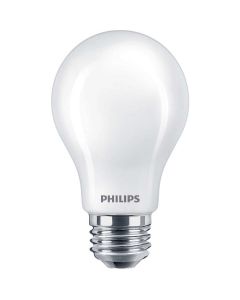 Philips 573436 Ultra Definition Dimmable A19 LED Bulb - 8A19/PER/UD/FR/G/E26/WGD 4/2PF T20Special Price $5.38 Regular Price $7.00
Philips 573436 Ultra Definition Dimmable A19 LED Bulb - 8A19/PER/UD/FR/G/E26/WGD 4/2PF T20Special Price $5.38 Regular Price $7.00 -
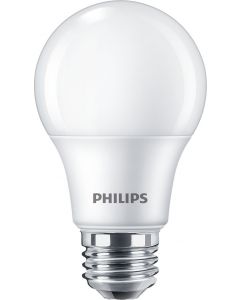 Philips 589754 14A19/CNG/850/FR/P/E26/D 12/1CT A19 bulbSpecial Price $3.65 Regular Price $4.74
Philips 589754 14A19/CNG/850/FR/P/E26/D 12/1CT A19 bulbSpecial Price $3.65 Regular Price $4.74 -
 Philips 589747 14A19/CNG/840/FR/P/E26/D 12/1CT A19 bulbSpecial Price $3.65 Regular Price $4.74
Philips 589747 14A19/CNG/840/FR/P/E26/D 12/1CT A19 bulbSpecial Price $3.65 Regular Price $4.74 -
 Philips 589739 14A19/CNG/830/FR/P/E26/D 12/1CT A19 bulbSpecial Price $3.65 Regular Price $4.74
Philips 589739 14A19/CNG/830/FR/P/E26/D 12/1CT A19 bulbSpecial Price $3.65 Regular Price $4.74 -
 Philips 589721 14A19/CNG/827/FR/P/E26/D 12/1CT A19 bulbSpecial Price $3.65 Regular Price $4.74
Philips 589721 14A19/CNG/827/FR/P/E26/D 12/1CT A19 bulbSpecial Price $3.65 Regular Price $4.74 -
 Philips 589713 11A19/CNG/850/FR/P/E26/D 12/1CT A19 bulbSpecial Price $2.83 Regular Price $3.68
Philips 589713 11A19/CNG/850/FR/P/E26/D 12/1CT A19 bulbSpecial Price $2.83 Regular Price $3.68 -
 Philips 589705 11A19/CNG/840/FR/P/E26/D 12/1CT A19 bulbSpecial Price $2.83 Regular Price $3.68
Philips 589705 11A19/CNG/840/FR/P/E26/D 12/1CT A19 bulbSpecial Price $2.83 Regular Price $3.68 -
 Philips 589697 11A19/CNG/830/FR/P/E26/D 12/1CT A19 bulbSpecial Price $2.83 Regular Price $3.68
Philips 589697 11A19/CNG/830/FR/P/E26/D 12/1CT A19 bulbSpecial Price $2.83 Regular Price $3.68 -
 Philips 589689 11A19/CNG/827/FR/P/E26/D 12/1CT A19 bulbSpecial Price $2.83 Regular Price $3.68
Philips 589689 11A19/CNG/827/FR/P/E26/D 12/1CT A19 bulbSpecial Price $2.83 Regular Price $3.68 -
 Philips 589671 8.8A19/CNG/840/FR/P/E26/D 12/1CT A19 bulbSpecial Price $2.23 Regular Price $2.90
Philips 589671 8.8A19/CNG/840/FR/P/E26/D 12/1CT A19 bulbSpecial Price $2.23 Regular Price $2.90 -
 Philips 589663 8.8A19/CNG/830/FR/P/E26/D 12/1CT A19 bulbSpecial Price $2.23 Regular Price $2.90
Philips 589663 8.8A19/CNG/830/FR/P/E26/D 12/1CT A19 bulbSpecial Price $2.23 Regular Price $2.90 -
 Philips 589655 8.8A19/CNG/850/FR/P/E26/D 12/1CT A19 bulbSpecial Price $2.23 Regular Price $2.90
Philips 589655 8.8A19/CNG/850/FR/P/E26/D 12/1CT A19 bulbSpecial Price $2.23 Regular Price $2.90 -
 Philips 589648 8.8A19/CNG/827/FR/P/E26/D 12/1CT A19 bulbSpecial Price $2.23 Regular Price $2.90
Philips 589648 8.8A19/CNG/827/FR/P/E26/D 12/1CT A19 bulbSpecial Price $2.23 Regular Price $2.90 -
 Philips 589630 5A19/CNG/850/FR/P/E26/D 12/1CT A19 bulbSpecial Price $2.00 Regular Price $2.60
Philips 589630 5A19/CNG/850/FR/P/E26/D 12/1CT A19 bulbSpecial Price $2.00 Regular Price $2.60 -
 Philips 589622 5A19/CNG/840/FR/P/E26/D 12/1CT A19 bulbSpecial Price $2.00 Regular Price $2.60
Philips 589622 5A19/CNG/840/FR/P/E26/D 12/1CT A19 bulbSpecial Price $2.00 Regular Price $2.60 -
 Philips 589614 5A19/CNG/830/FR/P/E26/D 12/1CT A19 bulbSpecial Price $2.00 Regular Price $2.60
Philips 589614 5A19/CNG/830/FR/P/E26/D 12/1CT A19 bulbSpecial Price $2.00 Regular Price $2.60 -
 Philips 589606 5A19/CNG/827/FR/P/E26/D 12/1CT A19 bulbSpecial Price $2.00 Regular Price $2.60
Philips 589606 5A19/CNG/827/FR/P/E26/D 12/1CT A19 bulbSpecial Price $2.00 Regular Price $2.60 -
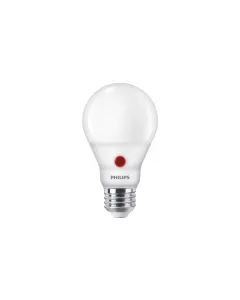 Philips 573238 8.8A19/PER/927/FR/P/E26/D2D/T20 4/1PF A19 bulbSpecial Price $8.08 Regular Price $10.50
Philips 573238 8.8A19/PER/927/FR/P/E26/D2D/T20 4/1PF A19 bulbSpecial Price $8.08 Regular Price $10.50 -
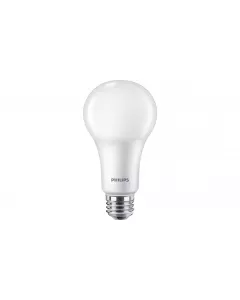 Philips 571521 18.5A21/PER/927/FR/P/E26/3WAY/T20 4/1PF A21 bulbSpecial Price $13.83 Regular Price $17.98
Philips 571521 18.5A21/PER/927/FR/P/E26/3WAY/T20 4/1PF A21 bulbSpecial Price $13.83 Regular Price $17.98
B/C-Shape – The “Candelabra” Light Bulbs
Both B and C-Shape bulbs fit into the same category with usage in decorative and low wattage applications. Both styles of bulb are designed in a teardrop shape to emulate a candle. The flair of B and C-Shape bulbs lends them well to decorative applications such as holiday and pendant lights, wall sconces, and chandeliers. Both shapes can also be used for low wattage lighting fixtures like night lights.
The B-Shape bulbs are known as “bullet” or “blunted” styles due to their rounded tip while C-Shape bulbs have a pointed tip and are known as “conical” light bulbs. Additionally, both shapes have an angularly tipped variant known as the BA and CA shapes. The sizes of B and C-Shape bulbs are typically smaller in diameter, ranging from B8 and C6 at the smallest to B13 and C15 at the largest. The size of the bulb required varies depending on the application. Chandeliers and wall sconces tend to use a medium size such as a B10 or CA10 while holiday lights and night lights typically use smaller bulbs like the B8 or C7.
-
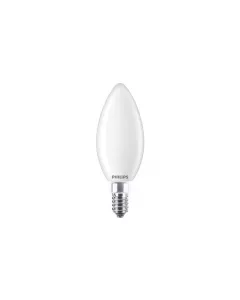 Philips 575191 5B11/PER/CRI95WG/FR/G/E12/WGD 1CT B11 bulbSpecial Price $6.15 Regular Price $8.00
Philips 575191 5B11/PER/CRI95WG/FR/G/E12/WGD 1CT B11 bulbSpecial Price $6.15 Regular Price $8.00 -
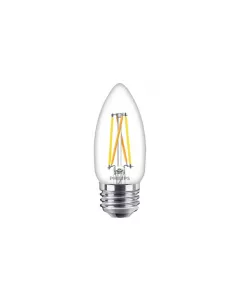 Philips 574392 3.5B11/PER/UD/CL/G/E26/WGD 6/3PF T20 B11 bulbSpecial Price $17.35 Regular Price $22.56
Philips 574392 3.5B11/PER/UD/CL/G/E26/WGD 6/3PF T20 B11 bulbSpecial Price $17.35 Regular Price $22.56 -
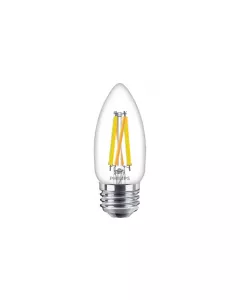 Philips 573378 5B11/PER/UD/CL/G/E26/WGD 6/3PF T20 B11 bulbSpecial Price $13.08 Regular Price $17.00
Philips 573378 5B11/PER/UD/CL/G/E26/WGD 6/3PF T20 B11 bulbSpecial Price $13.08 Regular Price $17.00 -
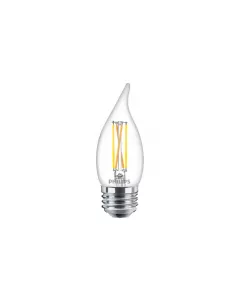 Philips 566679 3.5BA11/PER/UD/CL/G/E26/WGD 6/3PF T20 BA11 bulbSpecial Price $12.31 Regular Price $16.00
Philips 566679 3.5BA11/PER/UD/CL/G/E26/WGD 6/3PF T20 BA11 bulbSpecial Price $12.31 Regular Price $16.00 -
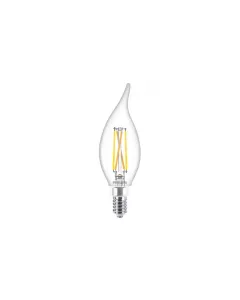 Philips 566653 2.3BA11/PER/UD/CL/G/E12/WGD 6/3PFT20 BA11 bulbSpecial Price $12.18 Regular Price $15.84
Philips 566653 2.3BA11/PER/UD/CL/G/E12/WGD 6/3PFT20 BA11 bulbSpecial Price $12.18 Regular Price $15.84 -
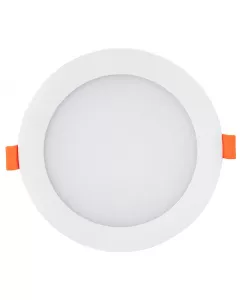 Westgate MFG RSL6-JB-MCT5 6in. 5CCT Slim Recessed Light w/ JBoxSpecial Price $19.74 Regular Price $21.80
Westgate MFG RSL6-JB-MCT5 6in. 5CCT Slim Recessed Light w/ JBoxSpecial Price $19.74 Regular Price $21.80 -
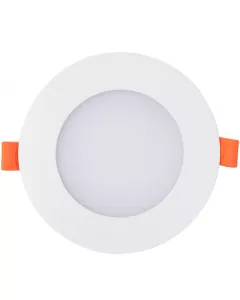 Westgate MFG RSL4-JB-MCT5 4in. 5CCT Slim Adjustable Recessed Light w/ JBoxSpecial Price $13.94 Regular Price $16.50
Westgate MFG RSL4-JB-MCT5 4in. 5CCT Slim Adjustable Recessed Light w/ JBoxSpecial Price $13.94 Regular Price $16.50 -
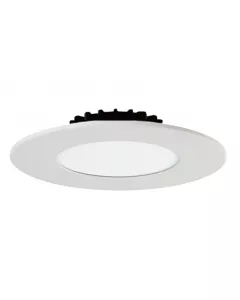 Westgate MFG RDJ4-MCT5 J-Box Direct-Mount Recessed Light, 10W, 2700K/3000K/3500K/4000K/5000KSpecial Price $26.74 Regular Price $37.80
Westgate MFG RDJ4-MCT5 J-Box Direct-Mount Recessed Light, 10W, 2700K/3000K/3500K/4000K/5000KSpecial Price $26.74 Regular Price $37.80 -
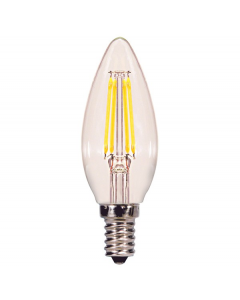 Satco S29866 LED C11 Bulb - 4W CTC/LED/50K/CL/120V *PHASE OUT - 21 UNITS REMAIN*Special Price $6.95 Regular Price $8.34
Satco S29866 LED C11 Bulb - 4W CTC/LED/50K/CL/120V *PHASE OUT - 21 UNITS REMAIN*Special Price $6.95 Regular Price $8.34 -
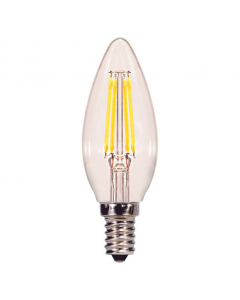 Satco S29890 LED C11 Bulb - 4W CTC/LED/30K/CL/120V *PHASE OUT - 15 UNITS REMAIN*Special Price $5.96 Regular Price $8.34
Satco S29890 LED C11 Bulb - 4W CTC/LED/30K/CL/120V *PHASE OUT - 15 UNITS REMAIN*Special Price $5.96 Regular Price $8.34 -
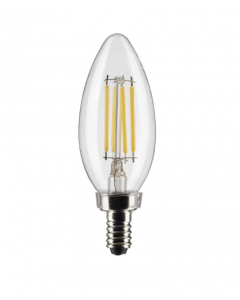 Satco S21264 LED B11 Bulb - 4B11/LED/927/CL/120V/E12Special Price $4.95 Regular Price $8.94
Satco S21264 LED B11 Bulb - 4B11/LED/927/CL/120V/E12Special Price $4.95 Regular Price $8.94 -
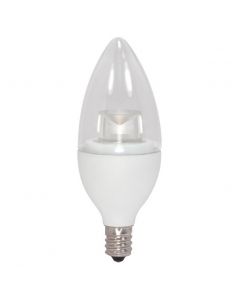 Satco S8951 LED B11 Bulb - 4.5CTC/LED/2700K/E12/120VSpecial Price $7.95 Regular Price $10.66
Satco S8951 LED B11 Bulb - 4.5CTC/LED/2700K/E12/120VSpecial Price $7.95 Regular Price $10.66 -
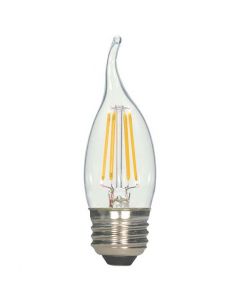 Satco S9573 LED CA11 Bulb - 4.5W EFC/LED/27K/120VSpecial Price $6.95 Regular Price $8.34Out of stock
Satco S9573 LED CA11 Bulb - 4.5W EFC/LED/27K/120VSpecial Price $6.95 Regular Price $8.34Out of stock -
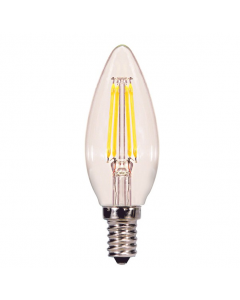 Satco S8839 LED C11 Bulb - 4W CTC/LED/40K/CL/120VSpecial Price $5.96 Regular Price $8.34
Satco S8839 LED C11 Bulb - 4W CTC/LED/40K/CL/120VSpecial Price $5.96 Regular Price $8.34 -
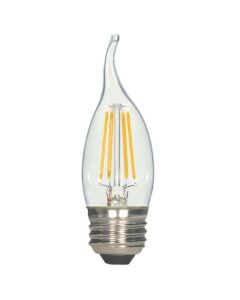 Satco S9571 LED CA11 Bulb - 2.5W EFC/LED/27K/120VSpecial Price $4.95 Regular Price $6.24
Satco S9571 LED CA11 Bulb - 2.5W EFC/LED/27K/120VSpecial Price $4.95 Regular Price $6.24 -
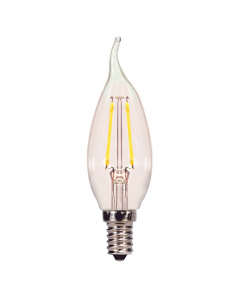 Satco S29921 LED CA11 Bulb - 2.5W CFC/LED/CL/27K/120V - THREE UNITS Remaining!!!Special Price $4.95 Regular Price $6.24
Satco S29921 LED CA11 Bulb - 2.5W CFC/LED/CL/27K/120V - THREE UNITS Remaining!!!Special Price $4.95 Regular Price $6.24 -
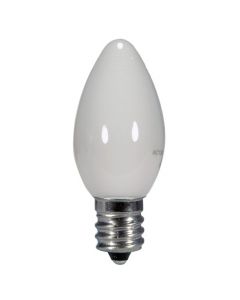 Satco S9157 LED C7 Bulb - 0.5W C7/WH/LED/120V/CDSpecial Price $4.95 Regular Price $6.24
Satco S9157 LED C7 Bulb - 0.5W C7/WH/LED/120V/CDSpecial Price $4.95 Regular Price $6.24 -
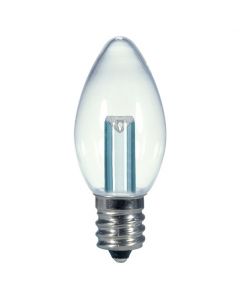 Satco S9156 LED C7 Bulb - 0.5W C7/CL/LED/120V/CDSpecial Price $4.95 Regular Price $6.24
Satco S9156 LED C7 Bulb - 0.5W C7/CL/LED/120V/CDSpecial Price $4.95 Regular Price $6.24 -
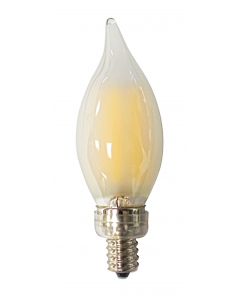 Westgate E12-FLA-5W-40K-D-F-BT Candelabra Led Bulb 4000KSpecial Price $6.04 Regular Price $8.58
Westgate E12-FLA-5W-40K-D-F-BT Candelabra Led Bulb 4000KSpecial Price $6.04 Regular Price $8.58 -
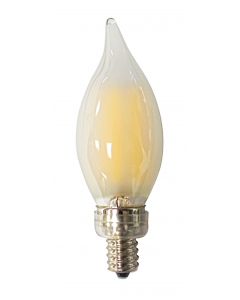 Westgate E12-FLA-5W-27K-D-F-BT Candelabra Led Bulb 2700KSpecial Price $6.04 Regular Price $8.58
Westgate E12-FLA-5W-27K-D-F-BT Candelabra Led Bulb 2700KSpecial Price $6.04 Regular Price $8.58
E-Shape – The “Ellipsoidal” Light Bulb
Unlike B and C-Shape bulbs, E-Shape bulbs are large, bright lamps. Known as “ellipsoidal” bulbs due to their elliptical shape, these types of bulbs are typically used for metal halide lamps. Metal halide lamps, as well as other gas high-intensity discharge (HID) lighting systems, require larger bulbs in order to provide the highest lumen-to-wattage output. Another common bulb shape for HID lamps is the BT-Shape bulb. Due to their similar usage in gas-discharge lamps, BT-Shape and E-Shape bulbs tend to be grouped together.
E-Shape bulbs can be found in a variety of applications from outdoor sports and parking lot lighting to indoor overhead lights in warehouses and grocery stores. A “dimpled” variant of the E-Shape can also be found in similar HID applications. Known as ED-Shape bulbs, these are named after the dimple at the top of the bulb and can range in size from ED18 to ED37. The sizes of E-Shape bulbs have a similar range of sizes from E17 up to E25. The size of E-Shape bulbs tend to increase as the lamp’s wattage requirements increase. This correlates with the brightness of the bulbs. The brightest E-Shape bulbs are typically the largest with the highest wattage requirements.
-
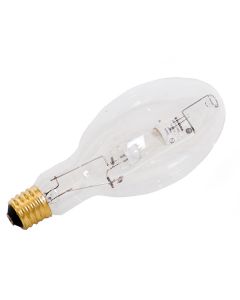 Sylvania M400/U 64036 - 400 Watt ED37 Metal Halide BulbSpecial Price $15.85 Regular Price $19.98
Sylvania M400/U 64036 - 400 Watt ED37 Metal Halide BulbSpecial Price $15.85 Regular Price $19.98 -
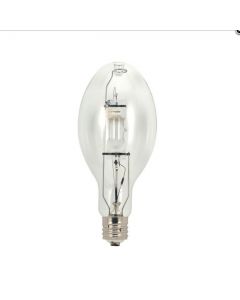 Satco S5878 - MS400/ED28/PS/V/4K Metal Halide LampSpecial Price $25.29 Regular Price $35.40
Satco S5878 - MS400/ED28/PS/V/4K Metal Halide LampSpecial Price $25.29 Regular Price $35.40 -
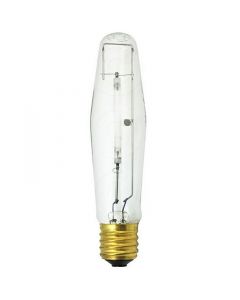 Sylvania 67576 LU200/ECO - 200 Watt HPS Bulb Bulb - ET18Special Price $19.95 Regular Price $51.00
Sylvania 67576 LU200/ECO - 200 Watt HPS Bulb Bulb - ET18Special Price $19.95 Regular Price $51.00 -
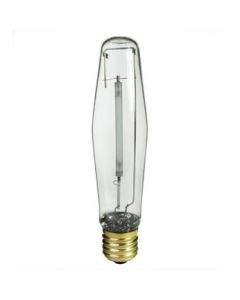 Philips C250S50/ALTO 467217 (Replaced the 368795) - 250 Watt HPS Bulb - ED18Special Price $35.50 Regular Price $45.00
Philips C250S50/ALTO 467217 (Replaced the 368795) - 250 Watt HPS Bulb - ED18Special Price $35.50 Regular Price $45.00 -
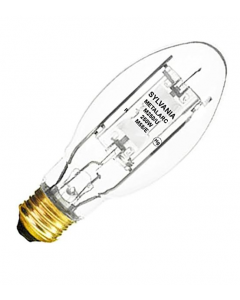 Sylvania 64032 (Replaces 64457) M250/U - 250 Watt Metal Halide Bulb - ED28Special Price $14.95 Regular Price $20.00
Sylvania 64032 (Replaces 64457) M250/U - 250 Watt Metal Halide Bulb - ED28Special Price $14.95 Regular Price $20.00 -
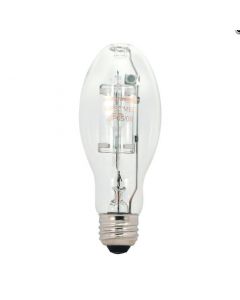 Satco S5854 - MP50/ED17/U/4K Metal Halide LampSpecial Price $20.56 Regular Price $28.78
Satco S5854 - MP50/ED17/U/4K Metal Halide LampSpecial Price $20.56 Regular Price $28.78 -
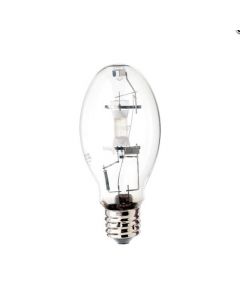 Satco S5838 - MS200/ED28/PS/V/4K Metal Halide LampSpecial Price $25.29 Regular Price $35.40
Satco S5838 - MS200/ED28/PS/V/4K Metal Halide LampSpecial Price $25.29 Regular Price $35.40 -
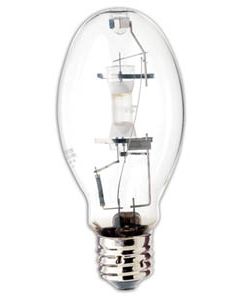 GE MVR250/U 42729 - 250 Watt Metal Halide Bulb - ED28 - EIGHT UNITS Remaining!!!Special Price $22.85 Regular Price $29.90
GE MVR250/U 42729 - 250 Watt Metal Halide Bulb - ED28 - EIGHT UNITS Remaining!!!Special Price $22.85 Regular Price $29.90 -
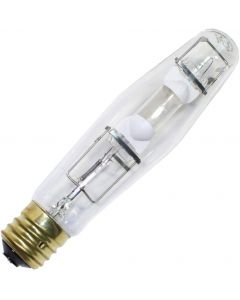 Sylvania M400/U/ET18 64575 - 400 Watt Metal Halide Bulb - ET18Special Price $22.85 Regular Price $30.00
Sylvania M400/U/ET18 64575 - 400 Watt Metal Halide Bulb - ET18Special Price $22.85 Regular Price $30.00 -
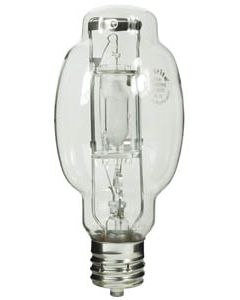 Sylvania M250/PS/U 64320 (64046) - 250 Watt Pulse Metal Halide Bulb - BT28Special Price $25.90 Regular Price $33.35
Sylvania M250/PS/U 64320 (64046) - 250 Watt Pulse Metal Halide Bulb - BT28Special Price $25.90 Regular Price $33.35 -
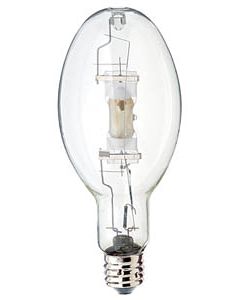 Philips MH400/U (34415-0) - 400 Watt Metal Halide Bulb - ED37Special Price $23.85 Regular Price $29.00Out of stock
Philips MH400/U (34415-0) - 400 Watt Metal Halide Bulb - ED37Special Price $23.85 Regular Price $29.00Out of stock -
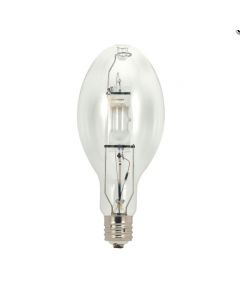 Satco S5833 - MH400/U Metal Halide LampSpecial Price $32.00 Regular Price $32.70
Satco S5833 - MH400/U Metal Halide LampSpecial Price $32.00 Regular Price $32.70 -
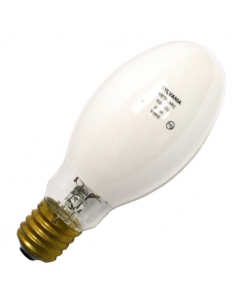 Sylvania 64458 (64033) - M250/C/U 250W Metal Halide BulbSpecial Price $19.85 Regular Price $23.70
Sylvania 64458 (64033) - M250/C/U 250W Metal Halide BulbSpecial Price $19.85 Regular Price $23.70 -
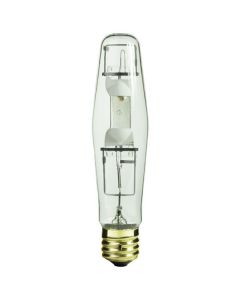 Sylvania M250/U/ET18 64474 - 250 Watt Metal Halide Bulb - ET18Special Price $23.57 Regular Price $33.00
Sylvania M250/U/ET18 64474 - 250 Watt Metal Halide Bulb - ET18Special Price $23.57 Regular Price $33.00 -
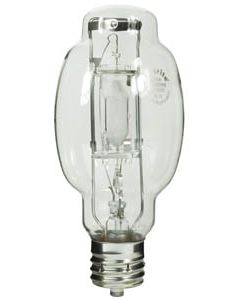 Sylvania 64404 MP250/BU-ONLY - 250 Watt Metal Halide Bulb - BT28Special Price $36.60 Regular Price $45.00
Sylvania 64404 MP250/BU-ONLY - 250 Watt Metal Halide Bulb - BT28Special Price $36.60 Regular Price $45.00 -
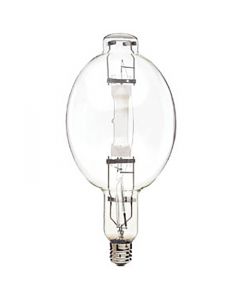 Philips MH1500/U 13162-3 - 1500 Watt Metal Halide Bulb - BT56Special Price $133.48 Regular Price $173.52
Philips MH1500/U 13162-3 - 1500 Watt Metal Halide Bulb - BT56Special Price $133.48 Regular Price $173.52
G-Shape – The “Globe” Light Bulb
G-Shape bulbs are similar in shape to A-Shape bulbs, but have a much larger and rounder "globe" than A-Shape bulbs. This is where their “globe” designation comes from. And in a similar fashion to B and C-Shape bulbs, Globe bulbs are great for decorative lighting fixtures such as chandeliers and wall sconces. They are great for producing a similar amount of light to A-Shape bulbs while still having the decorative properties of B and C-Shape bulbs. The size of G-Shape bulbs can range widely, with the smallest being the G16.5 and the largest G40. The most common sizes of G-Shape bulbs, such as the G25, are typically found in both kitchen and foyer lights as well as in bathroom vanities.
-
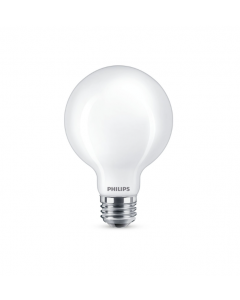 Philips 549535 Dimmable G25 LED Bulb - 5.5G25/PER/927-922/FR/G/E26/WGX1FB T20 120VSpecial Price $5.29 Regular Price $7.40
Philips 549535 Dimmable G25 LED Bulb - 5.5G25/PER/927-922/FR/G/E26/WGX1FB T20 120VSpecial Price $5.29 Regular Price $7.40 -
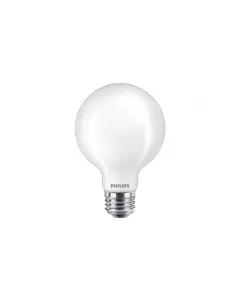 Philips 575217 3.5G25/PER/UD50/E26/FR/G/D 4/2PFT20 G25 bulbSpecial Price $10.72 Regular Price $13.94
Philips 575217 3.5G25/PER/UD50/E26/FR/G/D 4/2PFT20 G25 bulbSpecial Price $10.72 Regular Price $13.94 -
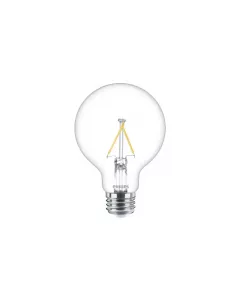 Philips 573337 3.5G25/PER/UD50/CL/G/E26/D 4/2PFT20 G25 bulbSpecial Price $6.92 Regular Price $9.00
Philips 573337 3.5G25/PER/UD50/CL/G/E26/D 4/2PFT20 G25 bulbSpecial Price $6.92 Regular Price $9.00 -
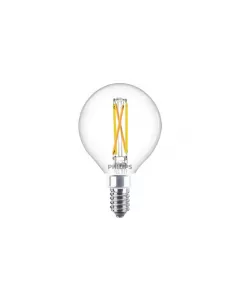 Philips 573303 3.5G16.5/PER/UD/CL/G/E12WGD6/2PFT20 G16.5 bulbSpecial Price $15.88 Regular Price $20.64
Philips 573303 3.5G16.5/PER/UD/CL/G/E12WGD6/2PFT20 G16.5 bulbSpecial Price $15.88 Regular Price $20.64 -
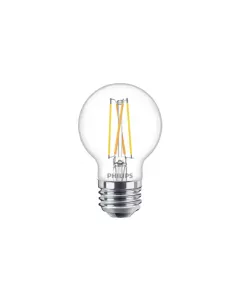 Philips 573295 3.5G16.5/PER/UD/CL/G/E26/WGD 6/2PF T20 G16.5 bulbSpecial Price $11.78 Regular Price $15.32
Philips 573295 3.5G16.5/PER/UD/CL/G/E26/WGD 6/2PF T20 G16.5 bulbSpecial Price $11.78 Regular Price $15.32 -
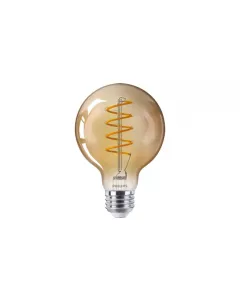 Philips 565887 6.5G25/VIN/820/E26/Amber/G/SP D 4/1PFT20 G25 bulbSpecial Price $9.50 Regular Price $12.26
Philips 565887 6.5G25/VIN/820/E26/Amber/G/SP D 4/1PFT20 G25 bulbSpecial Price $9.50 Regular Price $12.26 -
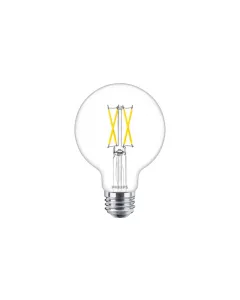 Philips 564914 5G25/PER/UD50/CL/G/E26/D 4/2PFT20 G25 bulbSpecial Price $10.72 Regular Price $13.94
Philips 564914 5G25/PER/UD50/CL/G/E26/D 4/2PFT20 G25 bulbSpecial Price $10.72 Regular Price $13.94 -
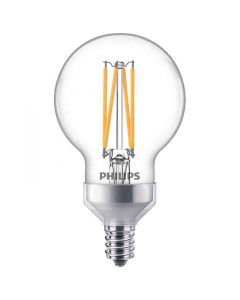 Philips 573329 Dimmable G16.5 LED Bulb - 5G16.5/PE/UD/CL/G/E12WGD 6/2PFT20Special Price $11.30 Regular Price $14.92
Philips 573329 Dimmable G16.5 LED Bulb - 5G16.5/PE/UD/CL/G/E12WGD 6/2PFT20Special Price $11.30 Regular Price $14.92 -
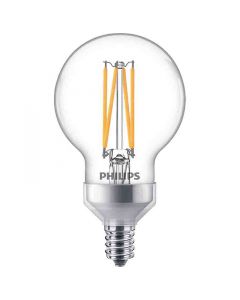 Philips 549303 Dimmable G16.5 LED Bulb - 5.5G16.5/PER/927-922/CL/G/E12/WGX 1FBT20 120VSpecial Price $5.66 Regular Price $7.92Out of stock
Philips 549303 Dimmable G16.5 LED Bulb - 5.5G16.5/PER/927-922/CL/G/E12/WGX 1FBT20 120VSpecial Price $5.66 Regular Price $7.92Out of stock -
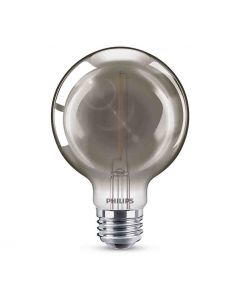 Philips 543124 Dimmable G25 LED Bulb - 4G25/MOD/840/E26/CL/GL/DIM 4/1BC 120VSpecial Price $6.13 Regular Price $8.58
Philips 543124 Dimmable G25 LED Bulb - 4G25/MOD/840/E26/CL/GL/DIM 4/1BC 120VSpecial Price $6.13 Regular Price $8.58 -
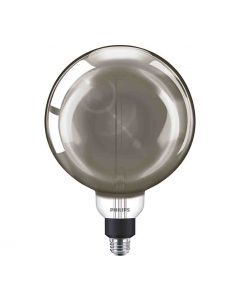 Philips 539692 Dimmable G63 LED Bulb - 7.5G63/modern/840/CL/G/D+CORD black 120V - *DISCONTINUED*Special Price $39.17 Regular Price $54.84Out of stock
Philips 539692 Dimmable G63 LED Bulb - 7.5G63/modern/840/CL/G/D+CORD black 120V - *DISCONTINUED*Special Price $39.17 Regular Price $54.84Out of stock -
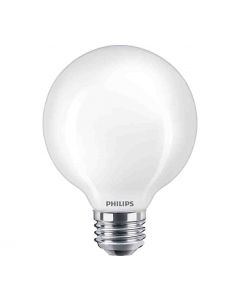 Philips 549212 Dimmable G25 LED Bulb - 5.5G25/PER/950/FR/G/E26/DIM 1FBT20 - Discontinued. Limited Qty Available.Special Price $2.95 Regular Price $3.80
Philips 549212 Dimmable G25 LED Bulb - 5.5G25/PER/950/FR/G/E26/DIM 1FBT20 - Discontinued. Limited Qty Available.Special Price $2.95 Regular Price $3.80 -
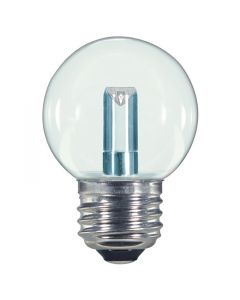 Satco S9158 LED G16 1/2 Bulb - 1.4W G16 1/2/CL/LED/120V/CDSpecial Price $6.95 Regular Price $9.62
Satco S9158 LED G16 1/2 Bulb - 1.4W G16 1/2/CL/LED/120V/CDSpecial Price $6.95 Regular Price $9.62 -
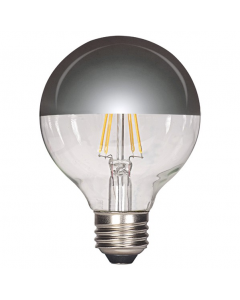 Satco S9828 LED G25 Bulb - 4.5G25/SLV/LED/E26/27K/120V - BACKORDERED Until FEBRUARY 2026Special Price $6.95 Regular Price $11.69
Satco S9828 LED G25 Bulb - 4.5G25/SLV/LED/E26/27K/120V - BACKORDERED Until FEBRUARY 2026Special Price $6.95 Regular Price $11.69 -
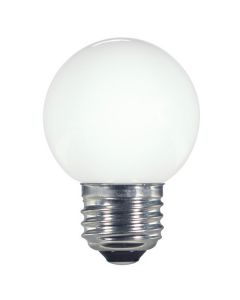 Satco S9159 LED G16 1/2 Bulb - 1.4W G16.5/WH/LED/120V/CDSpecial Price $6.95 Regular Price $9.62
Satco S9159 LED G16 1/2 Bulb - 1.4W G16.5/WH/LED/120V/CDSpecial Price $6.95 Regular Price $9.62 -
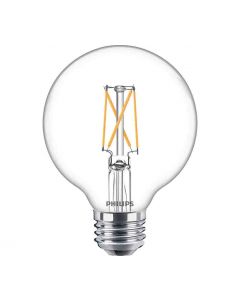 Philips 549196 Dimmable G25 LED Bulb - 5.5G25/PER/950/CL/G/E26/DIM 1FBT20 - Discontinued. Limited Qty. Available.Special Price $2.95 Regular Price $3.80
Philips 549196 Dimmable G25 LED Bulb - 5.5G25/PER/950/CL/G/E26/DIM 1FBT20 - Discontinued. Limited Qty. Available.Special Price $2.95 Regular Price $3.80 -
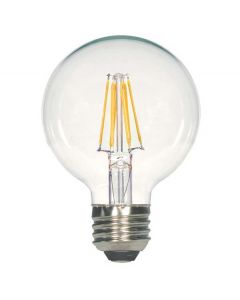 Satco S21252 LED G40 Bulb - 6G40/CL/LED/E26/927/120VSpecial Price $9.95 Regular Price $18.01
Satco S21252 LED G40 Bulb - 6G40/CL/LED/E26/927/120VSpecial Price $9.95 Regular Price $18.01 -
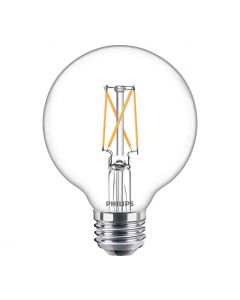 Philips 549188 Dimmable G25 LED Bulb - 3.8G25/PER/950/CL/G/E26/DIM 1FBT20 - TWO UNITS Remaining!!!Special Price $6.64 Regular Price $9.30Out of stock
Philips 549188 Dimmable G25 LED Bulb - 3.8G25/PER/950/CL/G/E26/DIM 1FBT20 - TWO UNITS Remaining!!!Special Price $6.64 Regular Price $9.30Out of stock -
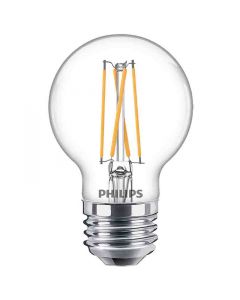 Philips 549253 G16.5 LED Bulb - 2.7G16.5/PER/927-922/CL/G/E26/WGX 1FBT20 - 13 UNITS Remaining!!!Special Price $5.47 Regular Price $7.66
Philips 549253 G16.5 LED Bulb - 2.7G16.5/PER/927-922/CL/G/E26/WGX 1FBT20 - 13 UNITS Remaining!!!Special Price $5.47 Regular Price $7.66 -
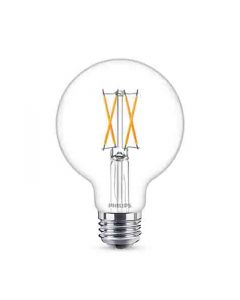 Philips 573345 Dimmable G25 LED Bulb - 3.5G25/PER/UD/CL/G/E26/WGD 4/2PF T20Special Price $11.35 Regular Price $14.76
Philips 573345 Dimmable G25 LED Bulb - 3.5G25/PER/UD/CL/G/E26/WGD 4/2PF T20Special Price $11.35 Regular Price $14.76
R-Shape – The “Reflector” Light Bulb
The family of R-Shape or “reflector” bulbs encompasses multiple styles of floodlights which use a reflective material inside the lamp to project a wide beam of light. The three most common styles of R-Shape bulbs are BR, MR, and PAR. While most reflector bulbs were originally halogen or incandescent bulbs, energy efficient LED reflector retrofits have rapidly begun to replace conventional lamps for most applications.
BR-Shape bulbs, named for the visible "bulge" at the top of the bulb, have the widest beam range of the reflector shape bulbs with a beam range of 90 degrees or wider. This makes them perfect for indoor, high-ceiling applications where a wide coverage of light is required. The most common sizes of BR bulbs are R20, BR30, and BR40. BR-Shape bulbs are similar in shape to regular R-Shape bulbs, so the two tend to be grouped together.
MR-Shape bulbs are known as “Multifaceted Reflector” bulbs due to the angled, reflective material inside the lamp which directs the light to one spot. This makes them perfect for spot lighting where a single focal point is desired. This type of bulb is typically found in display light applications in addition to general track and recessed lighting. The most common size of MR-Shape bulb is by far the MR16, but other variants can be found as well.
The last style of reflector bulb is the PAR-Shape, known as “Parabolic Aluminized Reflector” bulbs. This refers to the U-Shaped reflector found inside conventional PAR-Shaped bulbs, although newer LED PAR replacements do not have this reflector for which they’re named. PAR bulbs combine the wide angle of the BR-Shape and the spot lighting of the MR-Shape. This allows for PAR-Shape bulbs greater utilization on a wide range of both indoor and outdoor applications. PAR bulbs are typically found in the PAR30 and PAR38 sizes.
-
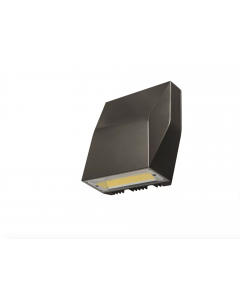 Lumark AXCL8A Large Full CutoffSpecial Price $284.93 Regular Price $398.90
Lumark AXCL8A Large Full CutoffSpecial Price $284.93 Regular Price $398.90 -
 Philips 586214 Dimmable PAR38 LED Bulb - 10PAR38/COR/927/F25/DIM/P/ULW/T20 6/1FBSpecial Price $10.46 Regular Price $13.60
Philips 586214 Dimmable PAR38 LED Bulb - 10PAR38/COR/927/F25/DIM/P/ULW/T20 6/1FBSpecial Price $10.46 Regular Price $13.60 -
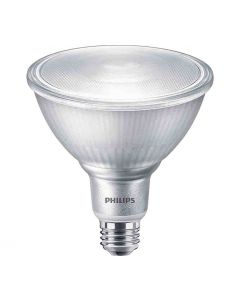 Philips 567859 Dimmable PAR38 LED Bulb - 10PAR38/LED/927/F25/DIM/GULW/T20 6/1FBSpecial Price $10.85 Regular Price $14.95
Philips 567859 Dimmable PAR38 LED Bulb - 10PAR38/LED/927/F25/DIM/GULW/T20 6/1FBSpecial Price $10.85 Regular Price $14.95 -
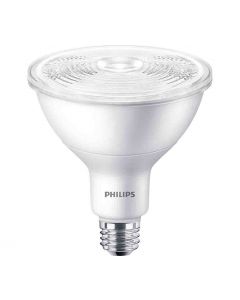 Philips 534859 Dimmable PAR38 LED Bulb - 16.5PAR38/PER/930/F25/DIM/120V 6/1FB T20 120VSpecial Price $16.67 Regular Price $25.00
Philips 534859 Dimmable PAR38 LED Bulb - 16.5PAR38/PER/930/F25/DIM/120V 6/1FB T20 120VSpecial Price $16.67 Regular Price $25.00 -
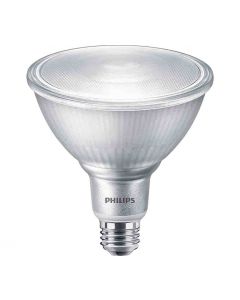 Philips 529693 Dimmable PAR38 LED Bulb - 12PAR38/LED/850/F40/DIM/ULW/120V 6/1FBSpecial Price $9.64 Regular Price $14.96Out of stock
Philips 529693 Dimmable PAR38 LED Bulb - 12PAR38/LED/850/F40/DIM/ULW/120V 6/1FBSpecial Price $9.64 Regular Price $14.96Out of stock -
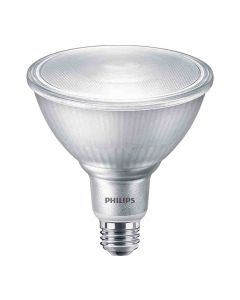 Philips 529685 Dimmable PAR38 LED Bulb - 12PAR38/LED/840/F40/DIM/ULW/120V 6/1FB 120VSpecial Price $9.64 Regular Price $14.96Out of stock
Philips 529685 Dimmable PAR38 LED Bulb - 12PAR38/LED/840/F40/DIM/ULW/120V 6/1FB 120VSpecial Price $9.64 Regular Price $14.96Out of stock -
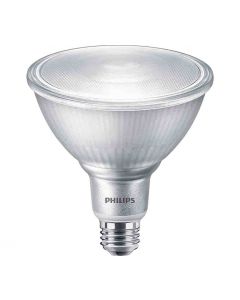 Philips 529651 Dimmable PAR38 LED Bulb - 12PAR38/LED/850/F25/DIM/ULW/120V 6/1FB 120VSpecial Price $9.00 Regular Price $13.50Out of stock
Philips 529651 Dimmable PAR38 LED Bulb - 12PAR38/LED/850/F25/DIM/ULW/120V 6/1FB 120VSpecial Price $9.00 Regular Price $13.50Out of stock -
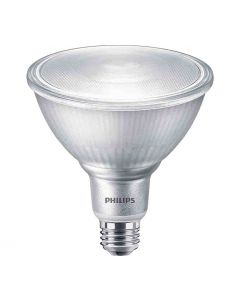 Philips 529644 Dimmable PAR38 LED Bulb - 12PAR38/LED/840/F25/DIM/ULW/120V 6/1FB 120VSpecial Price $9.64 Regular Price $14.96Out of stock
Philips 529644 Dimmable PAR38 LED Bulb - 12PAR38/LED/840/F25/DIM/ULW/120V 6/1FB 120VSpecial Price $9.64 Regular Price $14.96Out of stock -
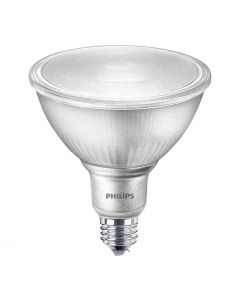 Philips 474700 Dimmable PAR38 LED Bulb - 12PAR38/LED/835/F40/GL/DIM FB 1PK 6/1 120V - *DISCONTINUED*Special Price $9.64 Regular Price $14.96Out of stock
Philips 474700 Dimmable PAR38 LED Bulb - 12PAR38/LED/835/F40/GL/DIM FB 1PK 6/1 120V - *DISCONTINUED*Special Price $9.64 Regular Price $14.96Out of stock -
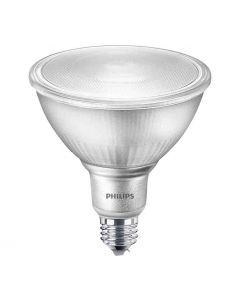 Philips 474676 Dimmable PAR38 LED Bulb - 14PAR38/LED/835/F25/GL/DIM FB 1PK 6/1 120V - *DISCONTINUED*Special Price $10.45 Regular Price $16.20Out of stock
Philips 474676 Dimmable PAR38 LED Bulb - 14PAR38/LED/835/F25/GL/DIM FB 1PK 6/1 120V - *DISCONTINUED*Special Price $10.45 Regular Price $16.20Out of stock -
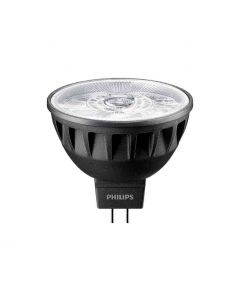 Philips 470153 Dimmable MR16 LED Bulb - 7.8MR16/PER/940/S10/Dim/EC/12V 10/1FB 12VSpecial Price $12.93 Regular Price $19.40
Philips 470153 Dimmable MR16 LED Bulb - 7.8MR16/PER/940/S10/Dim/EC/12V 10/1FB 12VSpecial Price $12.93 Regular Price $19.40 -
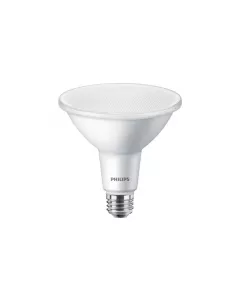 Philips 586149 Dimmable PAR38 LED - 13PAR38/COR/930/F40/DIM/P/ULW/T20 6/1FBSpecial Price $10.88 Regular Price $14.14
Philips 586149 Dimmable PAR38 LED - 13PAR38/COR/930/F40/DIM/P/ULW/T20 6/1FBSpecial Price $10.88 Regular Price $14.14 -
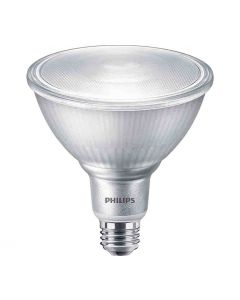 Philips 567800 Dimmable PAR38 LED Bulb - 13PAR38/LED/930/F40/DIM/GULW/T20 6/1FBSpecial Price $11.04 Regular Price $15.46Out of stock
Philips 567800 Dimmable PAR38 LED Bulb - 13PAR38/LED/930/F40/DIM/GULW/T20 6/1FBSpecial Price $11.04 Regular Price $15.46Out of stock -
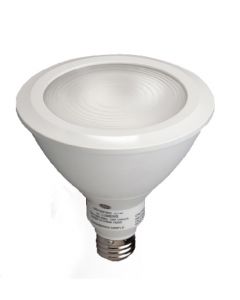 GE 88810 LED PAR38 High Output Bulb - LED32DP38W830/40 - *DISCONTINUED*Special Price $36.64 Regular Price $54.96Out of stock
GE 88810 LED PAR38 High Output Bulb - LED32DP38W830/40 - *DISCONTINUED*Special Price $36.64 Regular Price $54.96Out of stock -
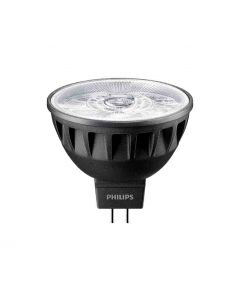 Philips 470187 Dimmable MR16 LED Bulb - 7.8MR16/PER/940/F25/Dim/EC/12VSpecial Price $12.92 Regular Price $19.38
Philips 470187 Dimmable MR16 LED Bulb - 7.8MR16/PER/940/F25/Dim/EC/12VSpecial Price $12.92 Regular Price $19.38 -
 GE 85110 - CMH20MR16/830/FL - 20 Watt Ceramic Metal Halide MR16 BulbSpecial Price $28.25 Regular Price $33.00
GE 85110 - CMH20MR16/830/FL - 20 Watt Ceramic Metal Halide MR16 BulbSpecial Price $28.25 Regular Price $33.00 -
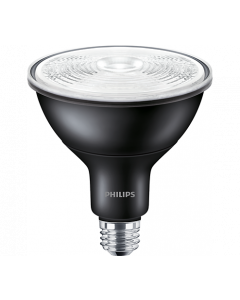 Philips 587477 - 14PAR38/EXPERTCOLOR RETAIL/F25/930/P/D/B - LED PAR38 LampSpecial Price $17.95 Regular Price $31.88
Philips 587477 - 14PAR38/EXPERTCOLOR RETAIL/F25/930/P/D/B - LED PAR38 LampSpecial Price $17.95 Regular Price $31.88 -
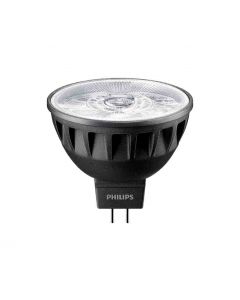 Philips 470195 Dimmable MR16 LED Bulb - 7.8MR16/PER/927/F35/Dim/EC/12V 10/1FBSpecial Price $12.92 Regular Price $19.38Out of stock
Philips 470195 Dimmable MR16 LED Bulb - 7.8MR16/PER/927/F35/Dim/EC/12V 10/1FBSpecial Price $12.92 Regular Price $19.38Out of stock -
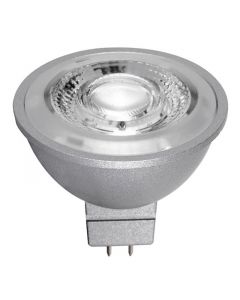 Satco S8644 LED MR16 Bulb - 8MR16/LED/40'/50K/90CRI/12VSpecial Price $11.95 Regular Price $16.36
Satco S8644 LED MR16 Bulb - 8MR16/LED/40'/50K/90CRI/12VSpecial Price $11.95 Regular Price $16.36 -
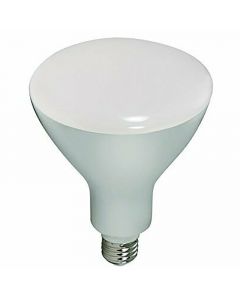 Satco S9638 LED BR40 Bulb - 16.5BR40/LED/2700K/1200L/120VSpecial Price $9.95 Regular Price $12.78
Satco S9638 LED BR40 Bulb - 16.5BR40/LED/2700K/1200L/120VSpecial Price $9.95 Regular Price $12.78
T-Shape – The “Tubular” Light Bulb
Tubular, or T-Shape, bulbs can refer to both linear tube lamps as well as short tube bulbs. Here, we will focus on short tube bulbs so as to not confuse them with fluorescent linear tubes since both use the same T-Shape designation. For more information specific to linear tubes, check out our blog post on LED tube retrofits. Short tube bulbs can be used in a wide range of applications from the bulbs inside a refrigerator to decorative fixtures. Some tubular bulbs are even designed with visible filaments to resemble the vacuum tubes found in vintage speakers and radios. Both linear tubes and short tube bulbs use the same rule of eighths to measure the diameter of the bulb. The size of T-Shape bulbs can vary greatly from T3 up to T20, with the most common sizes being T5, T8, and T10.
-
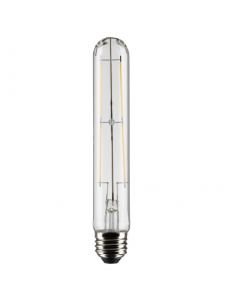 Satco S21354 8T9/LED/CL/927/120V/E26Special Price $7.95 Regular Price $13.61
Satco S21354 8T9/LED/CL/927/120V/E26Special Price $7.95 Regular Price $13.61 -
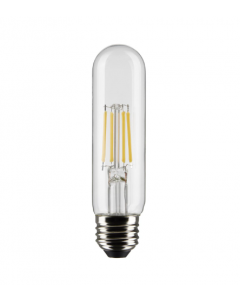 Satco S21344 LED T10 Bulb - 5.5T10/LED/CL/927/120V/E26Special Price $5.95 Regular Price $10.59
Satco S21344 LED T10 Bulb - 5.5T10/LED/CL/927/120V/E26Special Price $5.95 Regular Price $10.59 -
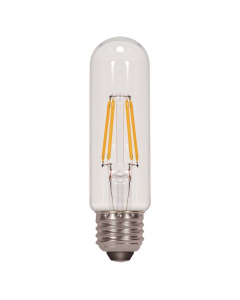 Satco S21345 LED T10 Bulb - 5.5T10/LED/E26/30K/120VSpecial Price $6.95 Regular Price $8.50
Satco S21345 LED T10 Bulb - 5.5T10/LED/E26/30K/120VSpecial Price $6.95 Regular Price $8.50 -
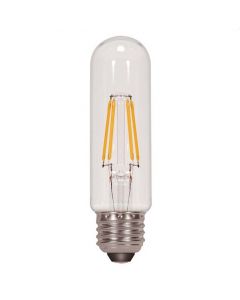 Satco S9580 LED T10 Bulb - 5T10/LED/E26/27K/120VSpecial Price $8.95 Regular Price $11.62Out of stock
Satco S9580 LED T10 Bulb - 5T10/LED/E26/27K/120VSpecial Price $8.95 Regular Price $11.62Out of stock -
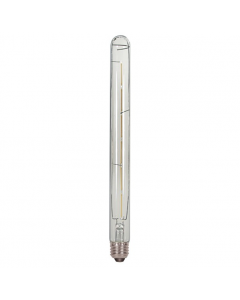 Satco S21358 LED T9 Bulb - 8T9/LED/CL927/120V/E26Special Price $7.95 Regular Price $13.61
Satco S21358 LED T9 Bulb - 8T9/LED/CL927/120V/E26Special Price $7.95 Regular Price $13.61 -
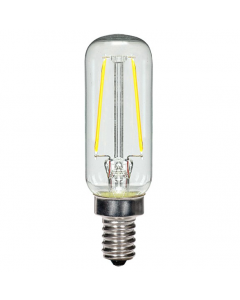 Satco S21340 T6 Bulb - 2.8T6/LED/CL/927/120V/E12Special Price $4.95 Regular Price $8.94
Satco S21340 T6 Bulb - 2.8T6/LED/CL/927/120V/E12Special Price $4.95 Regular Price $8.94 -
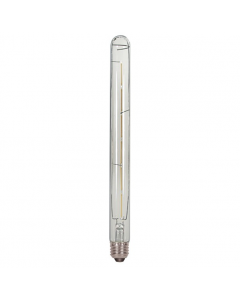 Satco S9582 LED T9 Bulb - 6.5T9/CL/LED/E26/27K/120VSpecial Price $9.95 Regular Price $12.56Out of stock
Satco S9582 LED T9 Bulb - 6.5T9/CL/LED/E26/27K/120VSpecial Price $9.95 Regular Price $12.56Out of stock -
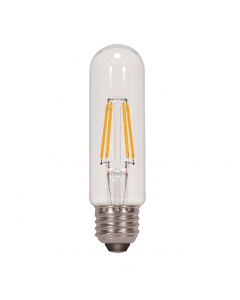 Satco S8841 LED T10 Bulb - 4.5T10/LED/E26/40K/120V - LIMITED STOCK Remaining!!!Special Price $9.45 Regular Price $11.62
Satco S8841 LED T10 Bulb - 4.5T10/LED/E26/40K/120V - LIMITED STOCK Remaining!!!Special Price $9.45 Regular Price $11.62 -
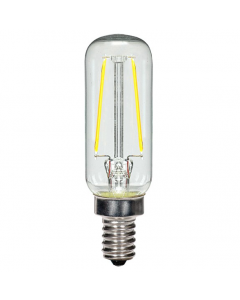 Satco S9872 LED T6 Bulb - 2.5T6/LED/CL/27K/E12/120V - *DISCONTINUED*Special Price $6.95 Regular Price $8.24Out of stock
Satco S9872 LED T6 Bulb - 2.5T6/LED/CL/27K/E12/120V - *DISCONTINUED*Special Price $6.95 Regular Price $8.24Out of stock -
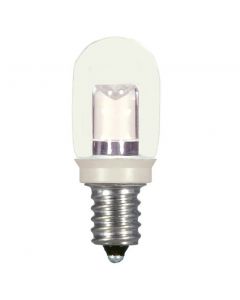 Satco S9177 LED T6 Bulb - Clear - 0.8W T6/CL/LED/120V/CDSpecial Price $6.95 Regular Price $9.62
Satco S9177 LED T6 Bulb - Clear - 0.8W T6/CL/LED/120V/CDSpecial Price $6.95 Regular Price $9.62 -
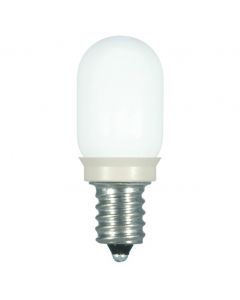 Satco S9176 LED T6 Bulb - 0.8W T6/FR/LED/120V/CDSpecial Price $6.95 Regular Price $9.62
Satco S9176 LED T6 Bulb - 0.8W T6/FR/LED/120V/CDSpecial Price $6.95 Regular Price $9.62
If you have any further questions, please don’t hesitate to contact us at 888-307-3700. We have qualified lighting specialists that will make sure that you get the product that best suits your needs. Stay tuned for an upcoming article which will similarly discuss the different types of bulb sockets and bases.



